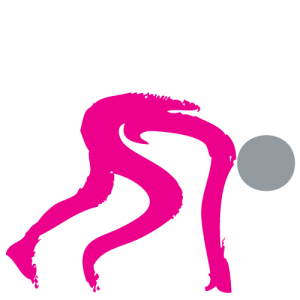If you’ve made the decision to start running then our Beginner’s Guide to Running will answer all your questions and get you going – it’s easier than you think!
Benefits of Running
Lose weight
Running is a great way to lose weight and get fit. Not only does it burn calories but it has tonnes of hot body benefits – running burns around 100 calories a mile (= 1 donut).
Hill sprints are a great way to improve power, increase speed, and build stamina. You don’t need to do hundreds either and they help tone your abs, legs and arms!
Improve your mood
Running reduces stress and releases happy hormones so there’s no doubt about it running training improves your mood blasting away the stresses and strains of everyday life.
Improve your health
Not only does running slow down the ageing process, it helps lower your blood pressure and cholesterol, gives you healthier lungs, and a strong cardiovascular system. If that’s not enough, running boosts your brain power and even helps improve your sex life.
Before you get started
One of the best bits about running is that all you need to really get started is a good pair of trainers (and a running sports bra for you ladies out there).
Here are a few extra pointers to get you going:
Trainers
You will need good, well cushioned running shoes specifically designed for running, not other sports such as tennis or workouts. Pop into a running store, get your gait analysed and they’ll be able to recommend a suitable pair of trainers, based on your running style, ability, any injuries you might have, and your running aims.
Warm up
Stretching cold muscles can have a bad effect and could lead to injury so start with a few dynamic stretches to get the blood pumping and finish up with a cool down and a few static stretches which should last no longer than 15 seconds each leg/arm.
Running technique
Don’t worry too much about your running style. Whatever feels natural to you as you begin is the right style for you. Just ensure your technique is on point with these universal tips:
- Keep your back straight and relaxed
- Keep your shoulders down
Breathing
Your breathing will get heavier and you may feel like you’re about to pass out but don’t worry – that’s completely normal! Your breathing becomes more rapid because your body isn’t used to the exercise and has to work harder to keep the blood pumping. This will improve in time as you get fitter.
Don’t be afraid to stop
If you feel tired and like you really need to stop, don’t worry, take a breather and walk until you’re ready to run again.
Setting goals
Setting yourself goals is a great way to stay motivated and bring focus to your training. You’ll benefit from the sense of achievement as you reach your targets – no matter how big or small!
Don’t sweat over how many miles you’re covering at first: just focus on the time spent on your feet. You’ll soon find that you’re travelling further each time – that’s when to begin increasing the length of your run and thinking about mileage. Just 15-30 minutes of running has tons of benefits such as kick starting your metabolism, burning fat and calories, and releasing those lovely endorphins that improve your mood and energy levels.
Motivation
When you’re not running with the running group and you’re finding it a bit of a dull grind at first try listening to music, finding a running buddy, or choose a race event (goal/challenge) to aim for.
Training
Start your training with our 9 week couch to 5k training plan.
How fast should you be going?
If you’re new to exercise or getting back into a fitness regime it’s reasonable to expect to feel slightly out of breath but by doing the “talk test” you can gage if you’re going too fast. You should be able to hold a conversation when running, when you can strike that balance you’ve found your ideal pace.
Don’t worry if you can’t run for the whole time, striking a walk/run balance is a great way to build up your fitness, instead simply focus on getting out there and moving.
Inside or out?
There are pros and cons of running in both conditions, mostly down to personal preference. A treadmill can be a great alternative if the weather is unappealing and it’s a great way to easily track your distance and speed. Treadmills also offer a slightly more cushioned run reducing the risk of many common injuries.
Running outside gives you a breath of fresh air and the sense of covering real ground, which can make you feel you’ve accomplished more, and therefore more likely to keep it up.
Running is great exercise and on average burns 100 calories per mile – but sadly, this won’t give you free reign on the fridge. A good balanced diet is key – you’ll only need to make specific changes to your diet if you begin training for an endurance event like a marathon, or you’re running specifically to lose weight.
Often we’re told to limit carbohydrates in our diet – as a runner, though, it’s best not to restrict your carbs too much. Focus on complex carbs – whole grains and such – as well as protein (to rebuild muscles) and a good mix of fruit and veggies.
If you’re running to lose weight a healthy diet is key as it’s vital to eat the right foods to maintain your energy levels so your running doesn’t suffer.
Don’t eat less and exercise more
Despite the age old mantra of eat less and exercise more to lose weight, there couldn’t be a worse generalisation for runners looking to trim down. In general, you should do one or the other, either run more and attempt to keep food intake constant or keep training the same and change your nutrition.
Eating very little and training hard has been shown in research to drastically slow down your metabolism.
Don’t cut out fat
Fat is a very important nutrient for the correct functioning of the body including the immune and hormonal systems; what’s more, if you eat more fat your body adapts by being able to burn more fat!
When you go for a run you are able to burn a greater percentage of the energy as fat. This doesn’t necessarily equal greater fat loss, as that is more governed by sum of energy going in and out of your fat cells over say a 24 hour period, but what it can do is make you feel better in your day to day life and for your next training session.
Don’t eat ‘low carb’
Eating consistently low carb is probably not a great idea unless you’re doing ultra-distance events. Running a good 5k/10k time will inevitably tap into glycogen (muscle stores of carbohydrate) and therefore fueling training with carbohydrate is very important. The key is to not overdo carbohydrate as many people do in their day-to-day life. If you train hard you essentially ‘earn’ the right to eat carbohydrate but still lose body fat
Avoiding injury
At first, your legs may be sore in the hours or days after a run, but if you keep it up (and remember the stretches!) the soreness will subside relatively quickly. It’s important to differentiate between pain and soreness – muscle stiffness is to be expected, acute pain can mean injury, and a trip to the GP.
Avoid the dreaded stitch!
- Eat something light pre-run: nuts, oats and fruit will give you an energy boost without taking too long to digest.
- Warm up: start gradually to let your body adjust its temperature and loosen up.
- Breathe: easy to forget! Try to develop a rhythm and control your breath.
- Maintain your posture: keep your head up, drop your shoulders and try not to hunch – this affects your breathing as well.
- Relax: if you do feel a stitch coming on, tensing up will only make things worse. Continue to breathe deeply and keep a rhythm, slowing down your run if necessary.
If the pain continues, put your arm on the side of the stitch up, reaching towards the sky. This should help to stretch out the muscles.
Treatment
Running injuries however frustrating are still unfortunately common but luckily, a quick response can make recovery much easier.
So, if you suddenly feel pain follow these simple steps and be back running again in no time.
Don’t run through pain. If you suddenly feel pain, stop running immediately. Walk for a while and see if the pain goes away, if it does, you may be able to continue running but its better not to risk it.
Once you get home the best form of treatment is RICE:
Rest: at least until you can run pain free, even if it means taking a day or two off running. It’s important not to overstress your injury.
Ice: apply to the injury to reduce swelling and any internal bleeding.
Compression: using tubigrip or similar will help to reduce swelling and speed up recovery.
Elevation: raising the injury so that is rests higher than your heart will limit build-up and reduce stiffness in the muscles or joints.
Don’t forget to track your progress with us at the gym and see your improvement week after week.
It can be pretty disheartening when you want to shout from the rooftops about your most recent run and your friends and family simply yawn at you instead so head over to our member’s page on the website and make some noise!
Come and join our Beginners Running Group on Wednesday evenings 6-7pm at Kept Fit Dunscar, Bolton BL7 9PQ



Trackbacks/Pingbacks